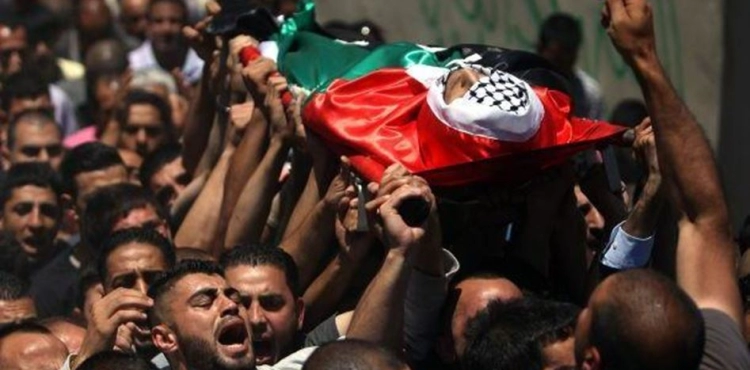The Palestine Center for Prisoners Studies reported today, Wednesday, that the number of the bodies of the martyrs of the captured movement detained by the occupation increased to eight after the occupation refused to hand over the body of the martyr Kamal Abu Waer, who was killed yesterday as a result of medical negligence.
The center said in a statement, that the occupation continues to insist on detaining the bodies of these prisoners in the largest moral, legal and human crime in the modern era, where the prisoner and his family are punished alive and dead.
Riyadh Al-Ashqar, Director of the Center, indicated that the oldest of these martyrs is Anis Dawla, a resident of Qalqilya, born in 1944, and he was arrested in 1968 and was sentenced to life imprisonment, and he was martyred in August 1980 during an open hunger strike in Ashkelon Prison. The fate or whereabouts of his body have been known, since 40 years.
The captive Aziz Uisat (53 years) from Jerusalem, was killed in May 2018, after he was subjected to a barbaric attack in Eshel prison by the special units, which led to his injury in the lungs and internal bleeding, and he was transferred to Ramla Hospital, and a week later he suffered a severe heart attack And the occupation refused to release him, until he was killed after an arrest that lasted 4 years and was sentenced to 30 years in prison, and his body is still being held.
In addition to them, the third captive martyr Faris Baroud, 56 years old, is the oldest prisoner in Gaza. He was arrested in 1991 and sentenced to life imprisonment, and his health deteriorated clearly in recent years. He was infected with a virus in the liver, where he was not provided with the necessary medical care, until he entered He was in a coma and was transferred to Soroka Hospital and was killed in February 2019 after spending 28 years behind bars, and his body is still being held.
The fourth prisoner, Nassar Majed Taqatqa (31 years), from Bethlehem, was killed on 16/7/2019 after his arrest only a month, as a result of the cruel torture he was subjected to in the Jalameh Detention Center, and Nitzan was isolated, which led to the deterioration of his health and the occupation´s refusal to provide him with treatment Or, he was transferred to hospital, which led to his death, and his body is still being held.
And the fifth prisoner, Bassam Al-Sayeh (47 years), from Nablus, who was arrested in October 2015, and was transferred directly to Ramla Hospital due to his being suffering from cancer. The prison administration did not deal with him with the minimum of care, which led to his death on 8/9/2019 in "Assaf Harofe" hospital as a result of medical negligence, and his body is still being held.
And the sixth prisoner, Saadi al-Gharabli (75 years), from the Gaza Strip, who was arrested in 1994 and was sentenced to life imprisonment. He was killed in Kaplan Hospital on the eighth of July this year.
And the seventh prisoner, the captive martyr Dawood Al-Khatib, from Bethlehem, who was elevated last September as a result of medical neglect for a long time despite the occupation´s knowledge of his suffering from heart problems for years, and he spent 18 years in the occupation prisons, and the occupation is still holding his body and refuses to hand it over to his family.
And the last martyr of the captive movement is the captive martyr Kamal Najeeb Abu Waer from Jenin, who was arrested in 2003 and was sentenced to repeated life imprisonment, and during his detention he suffered from throat and vocal tendon cancer, and was subjected to deliberate medical negligence that led to his death yesterday evening, and the occupation refused to hand over his body.
Al-Ashqar called on human rights and humanitarian institutions to intervene and put pressure on the occupation to release the bodies of the detained martyrs, return them and hand them over to their families, in line with the provisions of the Geneva Conventions, which obligated the occupying countries to hand over the bodies to their families, respect the dignity of the deceased and take into account their religious rituals during burial operations.












